Stylidium breviscapum, commonly known as the butterfly-like plant, is a unique and fascinating species of plant native to Australia. This delicate beauty has earned attention not only for its striking appearance but also for its intriguing biological traits and ecological significance. In this article, we will explore the scientific classification, physical characteristics, distribution, habitat, reproduction, and conservation status of Stylidium breviscapum.
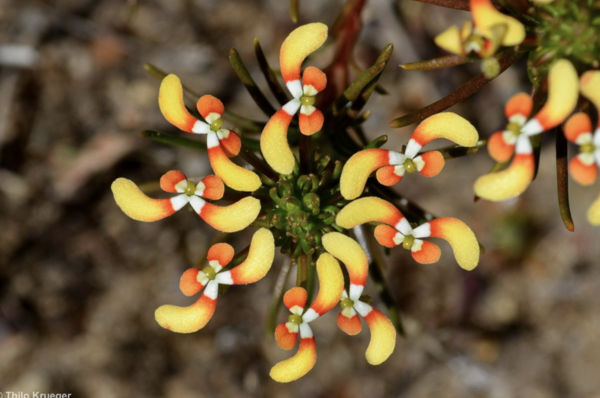
Stylidium breviscapum belongs to the genus Stylidium, a group of plants known for their unique mechanism of pollination through rapid floral movement, often likened to an insect-catching process. It is part of the family Stylidiaceae, which is a small family of dicotyledonous plants. The species is native to the dry and arid regions of Western Australia.
Kingdom: Plantae
Division: Angiosperms
Class: Eudicots
Order: Lamiales
Family: Stylidiaceae
Genus: Stylidium
Species: Stylidium breviscapum
Stylidium breviscapum stands out for its beautiful flower, which is often compared to a butterfly in flight. The plant’s physical features are adapted for survival in dry conditions, while its flowers are one of its most enchanting aspects.
Height: Typically, Stylidium breviscapum grows to a height of 20 to 40 cm. It is a relatively small and compact plant, making it an ideal candidate for rockeries or low-maintenance gardens.
Stem: The stems are slender and upright, supporting the plant’s small leaves and striking flowers.
Leaves: The leaves are narrow and elongated, with a fine, greenish hue, forming a rosette at the base of the plant.
Flowers: The flowers are the most remarkable feature of Stylidium breviscapum. They are butterfly-shaped, with a prominent column in the center, surrounded by delicate pink or purple petals. When pollinators approach, the flowers can rapidly snap, a mechanism called "triggering," which helps in pollination.
Size of Flowers: The flowers themselves are relatively small but quite showy, making them noticeable even on a plant of this size. The flower’s column can extend upward, appearing as if it is in mid-flight.
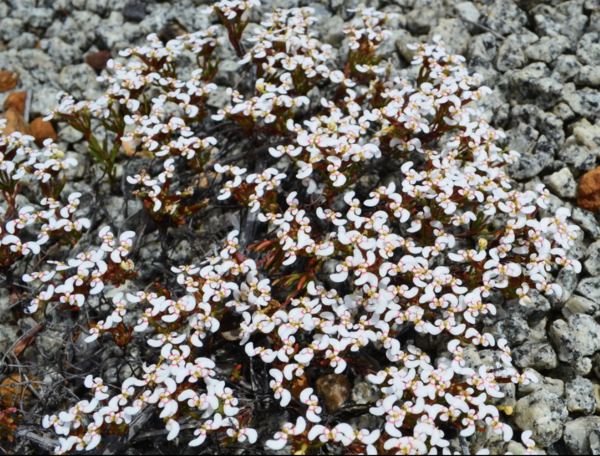
Flowering Mechanism: One of the most fascinating features of Stylidium breviscapum is its explosive pollination mechanism. The plant has evolved to use trigger mechanisms that cause the column to spring forward, depositing pollen on the visiting insect. This unique trait is a form of specialized pollination strategy found in many members of the genus Stylidium.
Lifespan: Stylidium breviscapum typically has a lifespan of 2 to 5 years, depending on the environment and care it receives. Its flowering season occurs in spring to early summer.
Stylidium breviscapum is native to Western Australia, particularly in the arid and semi-arid regions. These regions are known for their dry, often nutrient-poor soils. The plant thrives in these challenging conditions due to its evolutionary adaptations that help it conserve water and cope with extreme temperatures.
Distribution: The species is largely concentrated in the southwestern regions of Western Australia. However, it can also be found in some neighboring areas where similar climatic conditions prevail.
Preferred Habitat: Stylidium breviscapum is found in sandy soils, rocky outcrops, and shallow depressions that accumulate water after rare rainfall events. It is often seen in open heathlands, woodlands, and grasslands, where the soil is well-drained, and it can get ample sunlight for its photosynthesis.
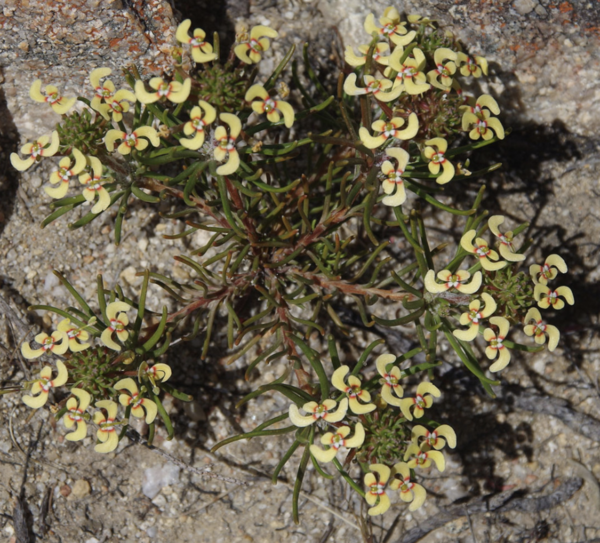
This species has evolved to thrive in the hot, dry climate of Western Australia. It has developed a low water requirement and can tolerate long periods of drought. Its ability to trap and retain moisture during short rainy seasons allows it to survive when other plants may struggle.
Stylidium breviscapum reproduces sexually through flowers, which attract pollinators such as bees and flies. The plant's unique mechanism for pollination is a key factor in its reproduction process.
Flowering Season: The plant blooms in late spring to early summer when the weather conditions are optimal. The flowers appear in clusters at the top of the stems, showing off their distinct butterfly-like form.
Pollination Mechanism: The flowers have a trigger mechanism in which the column of the flower rapidly snaps forward when an insect lands on it. This mechanism serves to transfer pollen from the anthers to the pollinator, allowing the plant to cross-pollinate efficiently.
Seed Production: Once pollination occurs, the plant produces small seeds. These seeds are typically dispersed by the wind or by insects, allowing the plant to spread over large areas, although it generally remains relatively localized in its native habitat.
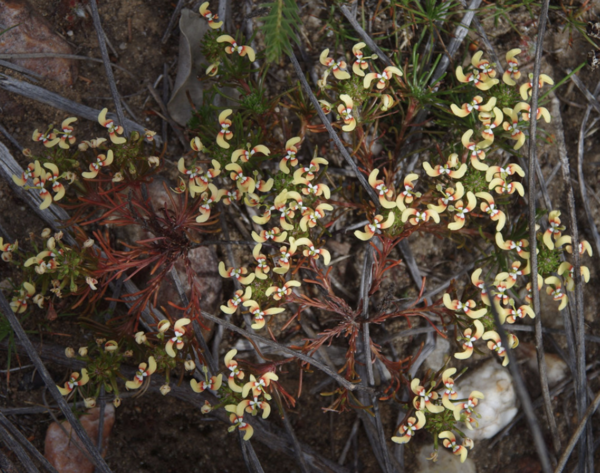
The seeds of Stylidium breviscapum are adapted to the harsh environment. Once the seeds settle in the soil, they require little water and can remain dormant until suitable conditions for germination arise. Once they germinate, they grow rapidly during periods of rainfall, forming new plants to continue the species’ cycle.
As of now, Stylidium breviscapum is not listed as an endangered species, but it is considered to be vulnerable in certain areas due to habitat loss and environmental degradation. The plant’s native environment is increasingly under threat from urbanization and land development, particularly in the regions of Western Australia where the plant is most abundant.
Habitat Destruction: The most significant threat to Stylidium breviscapum is the destruction of its natural habitat. Urban expansion and agriculture are pushing into areas that were once home to these plants, reducing their natural range.
Climate Change: With changing climate patterns, the long-term survival of species like Stylidium breviscapum could be jeopardized as temperatures rise and rainfall patterns shift.
Invasive Species: The introduction of non-native plant species can also compete with Stylidium breviscapum for resources, leading to its decline in certain areas.
Efforts to conserve Stylidium breviscapum are largely focused on habitat protection and raising awareness about the plant’s ecological importance. Botanic gardens in Australia and conservation programs aim to protect natural habitats and study the plant’s life cycle to ensure its long-term survival. Additionally, some regions are working on monitoring and protecting local populations through in situ conservation efforts.
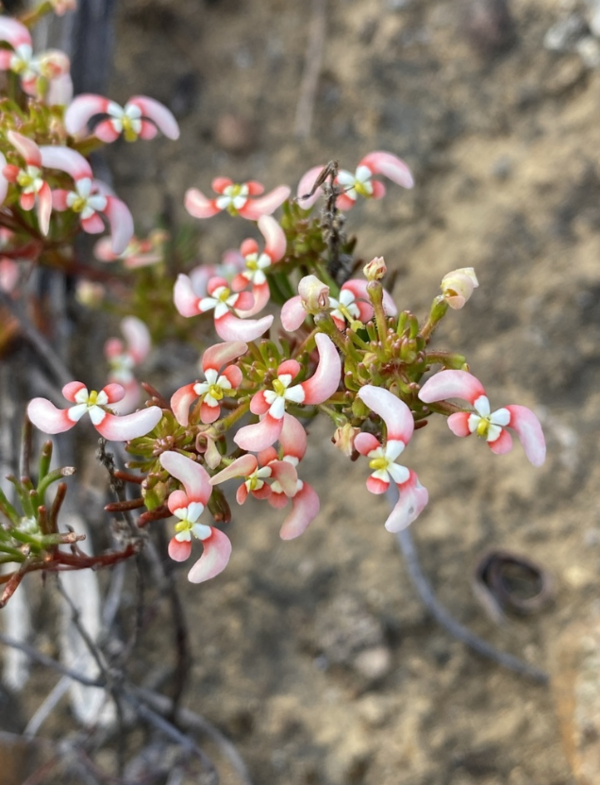
Stylidium breviscapum is a striking example of nature's beauty and complexity. Its butterfly-like flowers, rapid pollination mechanism, and ability to thrive in arid environments make it an extraordinary species in the world of plants. While it is not currently at risk of extinction, Stylidium breviscapum faces threats that could endanger its long-term survival. As conservation efforts continue, we can hope to preserve this unique plant for future generations to enjoy and admire.
animal tags: Stylidiaceae
We created this article in conjunction with AI technology, then made sure it was fact-checked and edited by a Animals Top editor.